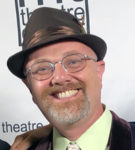By Eric George Tauber

CINCINNATI, Ohio — They only number about 0.7% of the general population of the United States, and yet they are everywhere. Maybe you’ve noticed them. Something about that woman on the bus seemed a little off. Maybe that young man’s voice in the market seemed curiously high. Or maybe they sat right next to you in shul, or across the dinner table, suffering in silence, and you had no idea.
The rate of attempted suicide for trans people is roughly 50%, though I suspect the number of unreported attempts and suicidal ideation is much higher. About 40% of homeless youth identify as LGBTQ+ and more than half of those are ethnic minorities. Isolated by society and their own families, trans people also make easy targets for hate crimes, the numbers for which are hard to pin down because fewer than 15% of law enforcement departments report their hate-crime statistics to the FBI.
Even in the LGBTQ+ community, the Ts tend to feel pushed to the margins by the Ls and Gs. That’s why events like the Trans Day of Visibility are so important. They let people whose identity falls outside the binary male/female norm feel seen, accepted and -most importantly- not alone.
What does it mean to “be seen”? It means to be validated in the way that you see yourself. Being called “Sir” or “Ma’am” when that is how you appear -but not how you feel- can be a little hurtful even if unintentionally so. I liken it to Jews and other religious minorities being wished a “Merry Christmas.” The holiday wishers aren’t intentionally trying to erase us. It’s just not who we are.
Congregation Beit Simchat Torah, the LGBTQ+ synagogue of New York City, hosted an online discussion today [March 31] for Trans Day of Visibility. Student Rabbi Ariel Zitny (he/him) of HUC-JIR, a trans-man himself, delivered the drash for last Friday’s Erev Shabbat.
“It feels nice to be celebrated. … Many of us bounce between feeling invisible to feeling hyper-visible.”
Zitny explained that he feels invisible when people don’t realize that he’s transgender and hyper-visible when that’s the only part of him that they see.
Is there space in the Jewish community for transgender people? Zitny cited a line of Torah.
“And Moshe did as Hashem commanded him; and HaEdah (the Assembly) was gathered together unto the entrance of the Ohel Mo’ed (Tent of Meeting).” (Lev 8:4, Hebrew Bible)
Rashi interpreted this line literally as the whole Nation of Israel. Some scholars estimate the number to roughly two million people. Assuming the same 0.7 percentile infers roughly 14,000 trans people among them. And yet they were not cut off or stoned but included in the assembly.
Zitny’s partner, Ze’evi Berman (they/them) then sang Birkat Cohanim (the Priestly Blessing) in gender-neutral Hebrew. So instead of the traditional masculine Yivarechechah… it came out Yivarechecheh Adonai Veyishmarecheh….
(May Adonai bless you and keep you….)
Is this new syntax a passing fancy or will it catch on? There are those who would consider it blasphemy to tinker with HaLashon Kadosh (the Holy Tongue), but the same was said of Eliezer ben Yehuda when he came up with modern Hebrew words for electricity and airplane. Traditions change over time. After all, how many of us still sit in shul separated from our partners by a mechitzah?
So maybe the time has come to take down the mechitzah of prejudice and misunderstanding between trans and cis-gender people and let HaEdah (the whole assembly) come together before the Tent of Meeting singing Haveinu Shalom Aleichem, We bring peace unto you.
Amen.
*
Eric George Tuber is a freelance writer, formerly based in San Diego, who now lives in Cincinnati.